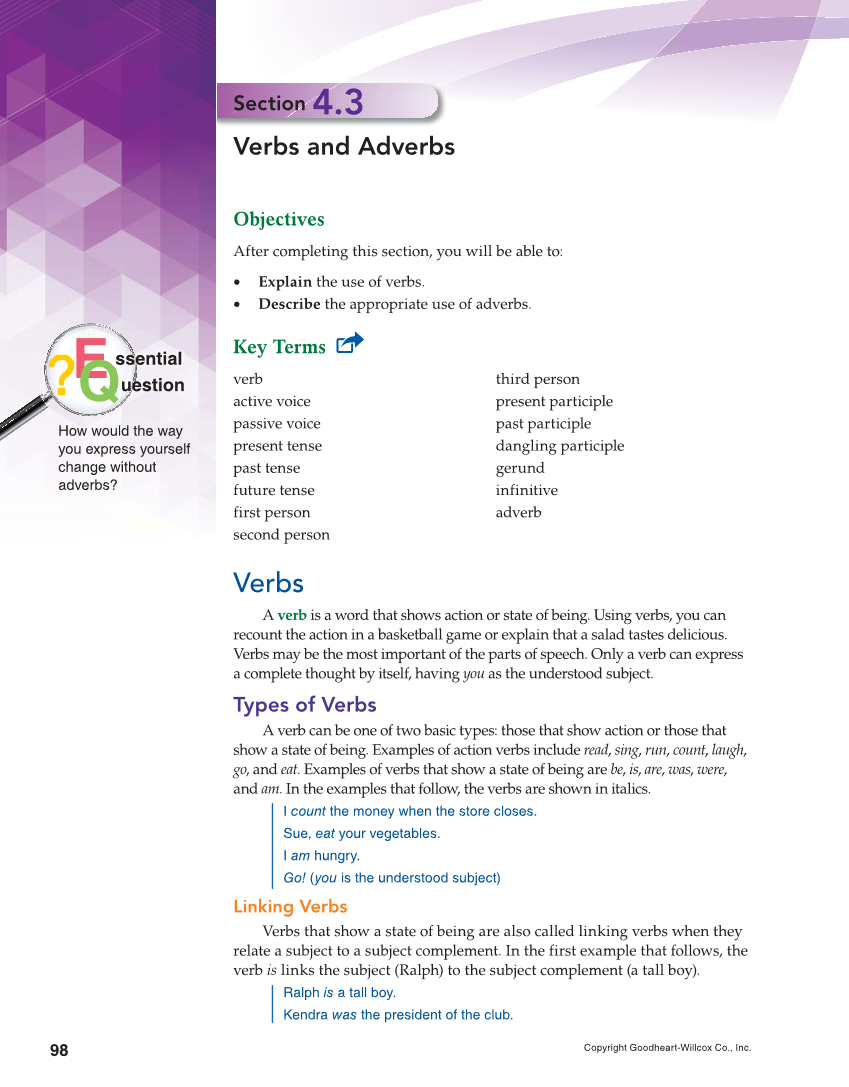98 Copyright Goodheart-Willcox Co., Inc. How would the way you express yourself change without adverbs? E Q ssential uestion Section 4.3 Verbs and Adverbs Objectives After completing this section, you will be able to: • Explain the use of verbs. • Describe the appropriate use of adverbs. Key Terms verb active voice passive voice present tense past tense future tense first person second person third person present participle past participle dangling participle gerund infinitive adverb Verbs A verb is a word that shows action or state of being. Using verbs, you can recount the action in a basketball game or explain that a salad tastes delicious. Verbs may be the most important of the parts of speech. Only a verb can express a complete thought by itself, having you as the understood subject. Types of Verbs A verb can be one of two basic types: those that show action or those that show a state of being. Examples of action verbs include read, sing, run, count, laugh, go, and eat. Examples of verbs that show a state of being are be, is, are, was, were, and am. In the examples that follow, the verbs are shown in italics. I count the money when the store closes. Sue, eat your vegetables. I am hungry. Go! (you is the understood subject) Linking Verbs Verbs that show a state of being are also called linking verbs when they relate a subject to a subject complement. In the first example that follows, the verb is links the subject (Ralph) to the subject complement (a tall boy). Ralph is a tall boy. Kendra was the president of the club.
